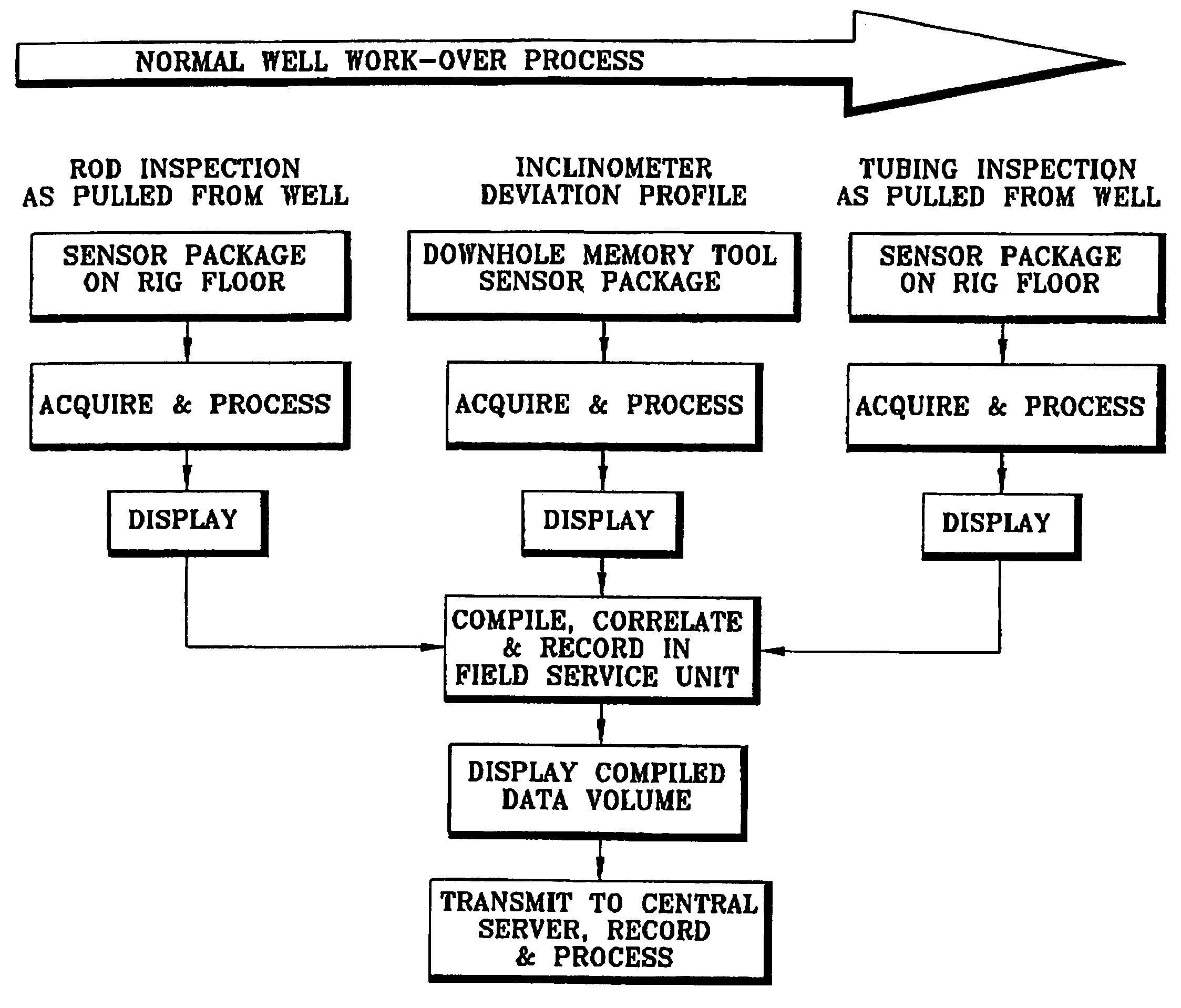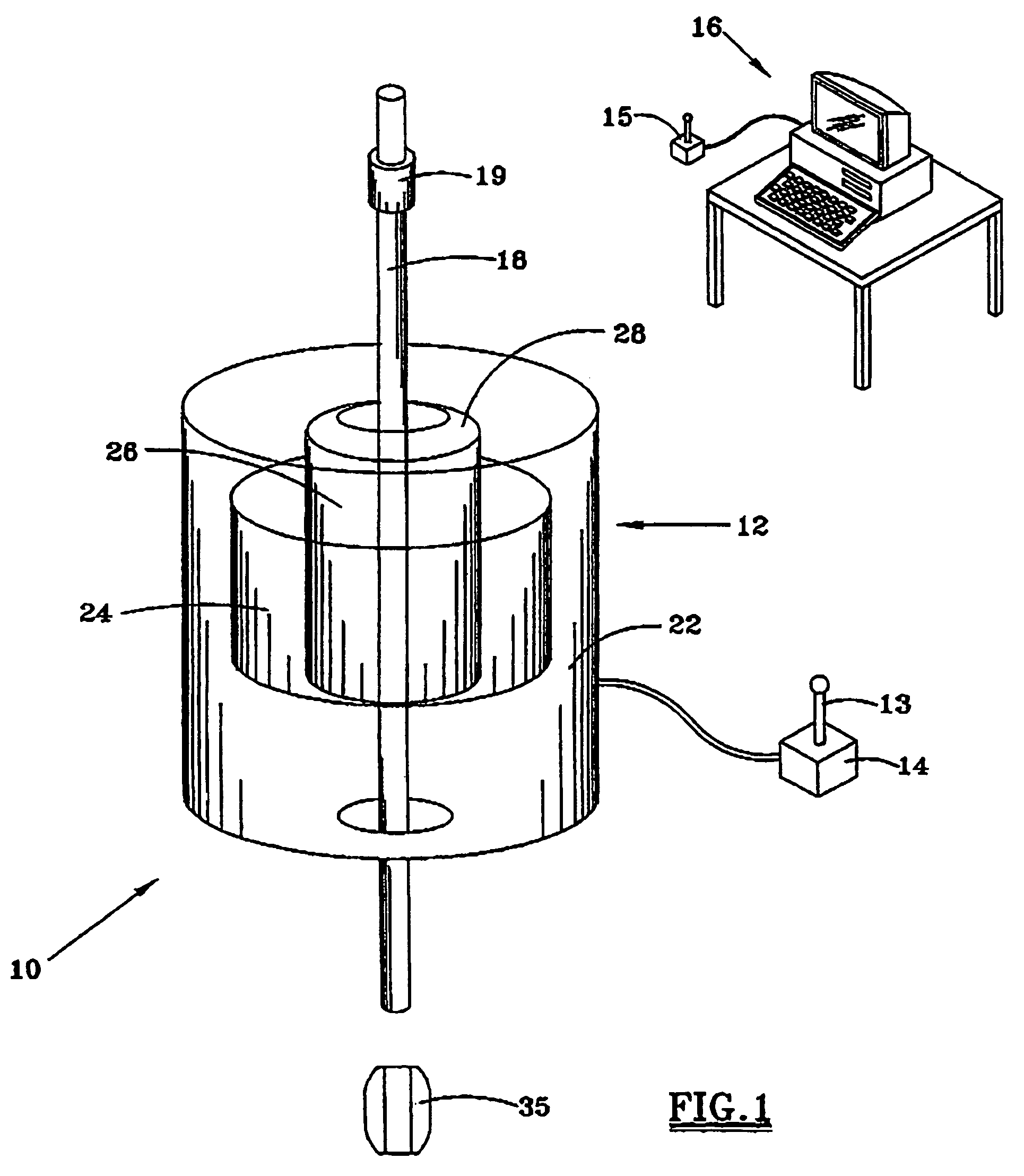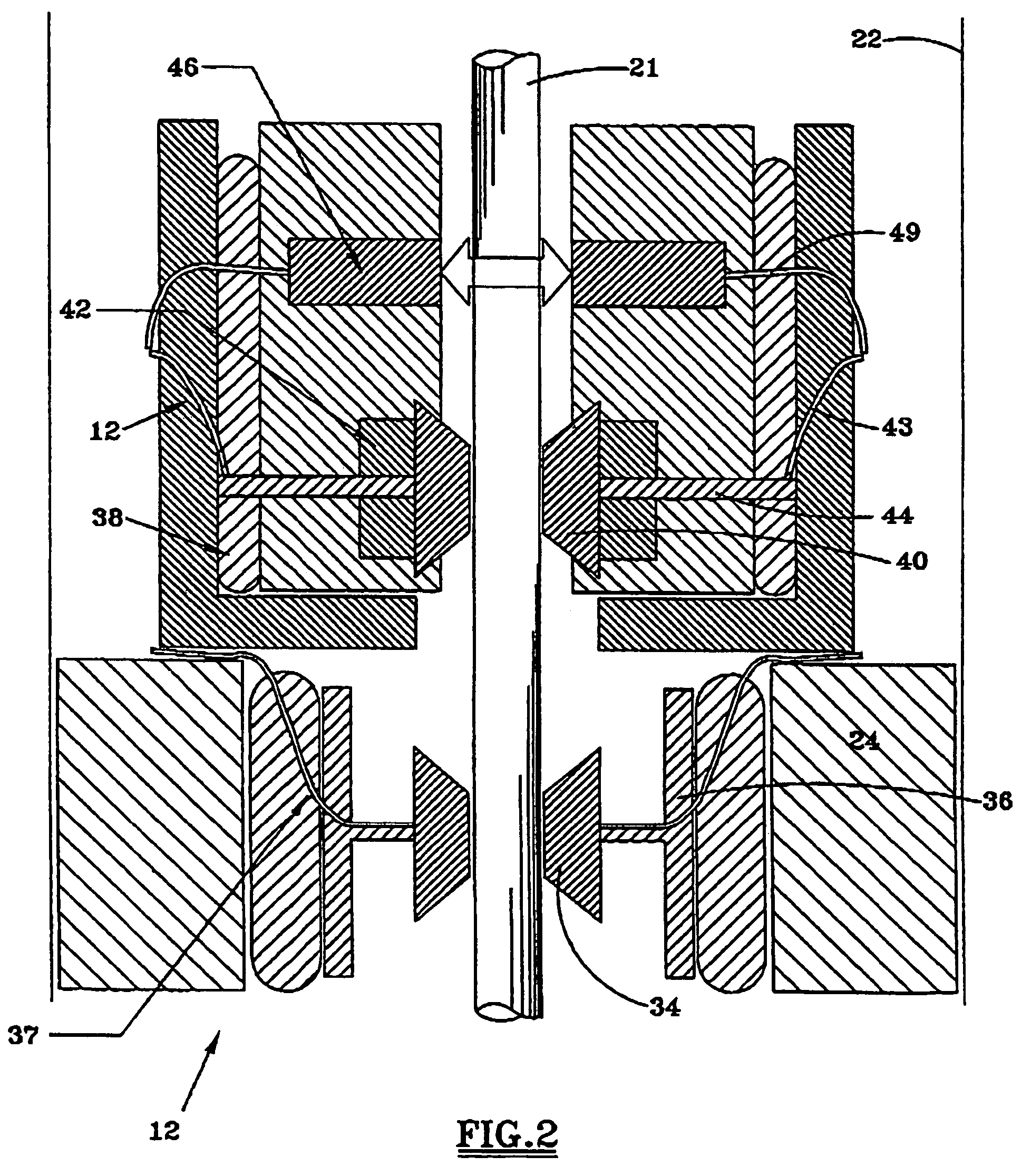This is often the case with mature producing fields where production has declined and operating margins are thin.
A number of factors conspire to wear down and eventually cause failure in both sucker rods and the production tubing in which they move.
Produced fluid is often corrosive, attacking the sucker rod surface and causing pitting that may lead to loss of cross-sectional area or
fatigue cracking and subsequent rod failure.
The rod and tubing also wear against each other.
Even boreholes believed to have been drilled so as to be truly vertical and considered to be nominally straight may deviate considerably from true vertical, due to factors such as
drill bit rotational speed, weight on the
drill bit, inherent imperfections in the size, shape, and
assembly of
drill string components and naturally-occurring changes in the formation of the earth that affect drilling
penetration rate and direction.
As a result, sucker rods and production tubing are never truly concentric, especially during the dynamics of pumping, and instead contact one another and wear unpredictably over several thousand feet of depth.
Additionally, in certain conditions, such as in geologically active areas or in areas of
hydrocarbon production from diatomite formations, wellbores may shift over time, causing additional deviation from vertical.
Boreholes deviate considerably from true vertical due to various factors, including
drill bit rotational speed, weight on the
drill bit, inherent imperfections in the size, shape, and
assembly of
drill string components and naturally-occurring changes in the formation of the earth.
In certain conditions, such as in geologically active areas or in areas of
hydrocarbon production from diatomite formations, producing wells may shift over time, causing additional deviation from vertical.
As a result, sucker rods and production tubing are often never truly concentric, especially during the dynamics of pumping, and instead contact one another and wear in certain areas, some of which are known as “doglegs”, or where the tubing sags or is kinked.
Without a continuous deviation survey of the wellbore, it is difficult, if not impossible, to identify areas where the well deviation from vertical results in contact and wear of the rods and tubing.
However, in the case of most existing rod-pumped oil wells, any such surveys performed during the original drilling of the well largely comprised periodic surveys of wellbore direction and inclination performed only at one or two key intervals during the well-drilling operation.
Consequently, a continuous profile of the wellbore deviation, giving rise to tubing and rod wear, is not generally known.
Alternatively, performing a dedicated, continuous directional survey of existing wellbores, such as those contemplated in the above patents, is generally cost-prohibitive.
Conventional systems that rely only upon amplitude and time, or upon amplitude and wellbore depth, are susceptible to misinterpretation since the apparent flaw
signal amplitude may be a function of many factors other than depth alone.
Systems may utilize relatively gimbaled gyroscopes or expensive and complex Coriolis-effect strapped-down gyroscopes, as disclosed in U.S. Pat. No. 6,453,239.
Such tools are generally too large and lengthy to be used inside small
diameter production tubing, and too expensive for most pumped well application.
The high cost of these systems prohibits consideration by the operators of relatively shallow, existing rod-pumped, producing wells in the declining fields of mature sedimentary basins.
Failure of pumped oil wells due to the
cumulative effect of the wear of sucker rods on tubing and such wear combined with corrosion is considered to be the single largest cause of well down time.
Since many of these mitigation techniques are expensive to apply,
oil well operators must carefully assess the economics of any such mitigation techniques.
Although wear can be mitigated, it cannot be eliminated, so inspection of sucker rods and production tubing are common in the industry.
Well operators within the industry commonly follow a “run until failure” approach, only inspecting components upon failure of some element of the wellbore, which may include a hole or split in the tubing,
pump failure, rod failure, or tubing separation.
The nature of the industry is that down-time is costly, both in terms of lost or deferred production and the
actual cost to repair the failure by work-over of the wellbore.
Another reason well operators are reluctant to perform inspections at regular intervals is that the diagnostic capabilities of current inspection practices are somewhat limited.
Further, many operators are unable to devote the time and human resources to perform the necessary analysis of data such as well deviation, rod failure and tubing failure.
Caliper surveys are available to measure the inside
diameter of production tubing but cannot examine the condition of the outside condition of the tubing.
Ironically, however, the analyses derived from the resulting data are relatively limited and shortsighted.
The data obtained is not optimally used to correct or mitigate wear.
Additionally, because the production tubing in most rod-pumped producing wells is tubing that has previously been used in other wells or from such reclaimed supplies, pre-existing wear patterns on tubing alone are often misleading as to the root causes of tubing wear in the current wellbore.
Further, even a detailed, positional analysis of defects does not provide an adequate window as to their
root cause or mitigation.
This technique, however, reduces the inside diameter of the tubing and does not assess the cause of tubing wear.
As a result, the polythene liner may simply fail over time, rather than the tubing, which still necessitates work-over.
Not even “real time” data reports provide an adequate solution to mitigating wear, because they do nothing to improve the quality or scope of the analysis, or correlate tubing condition information with rod condition information.
Another problem with existing inspection systems is that there is no available means of performing these assessments in a cost-effective and timely manner so that tubing wear can be mitigated through an economical solution specific to a well.
Because quickly returning the well to production is of paramount importance, full analysis of any limited information available is often difficult, if not impossible, to perform before the well is returned to production.
 Login to View More
Login to View More  Login to View More
Login to View More 


